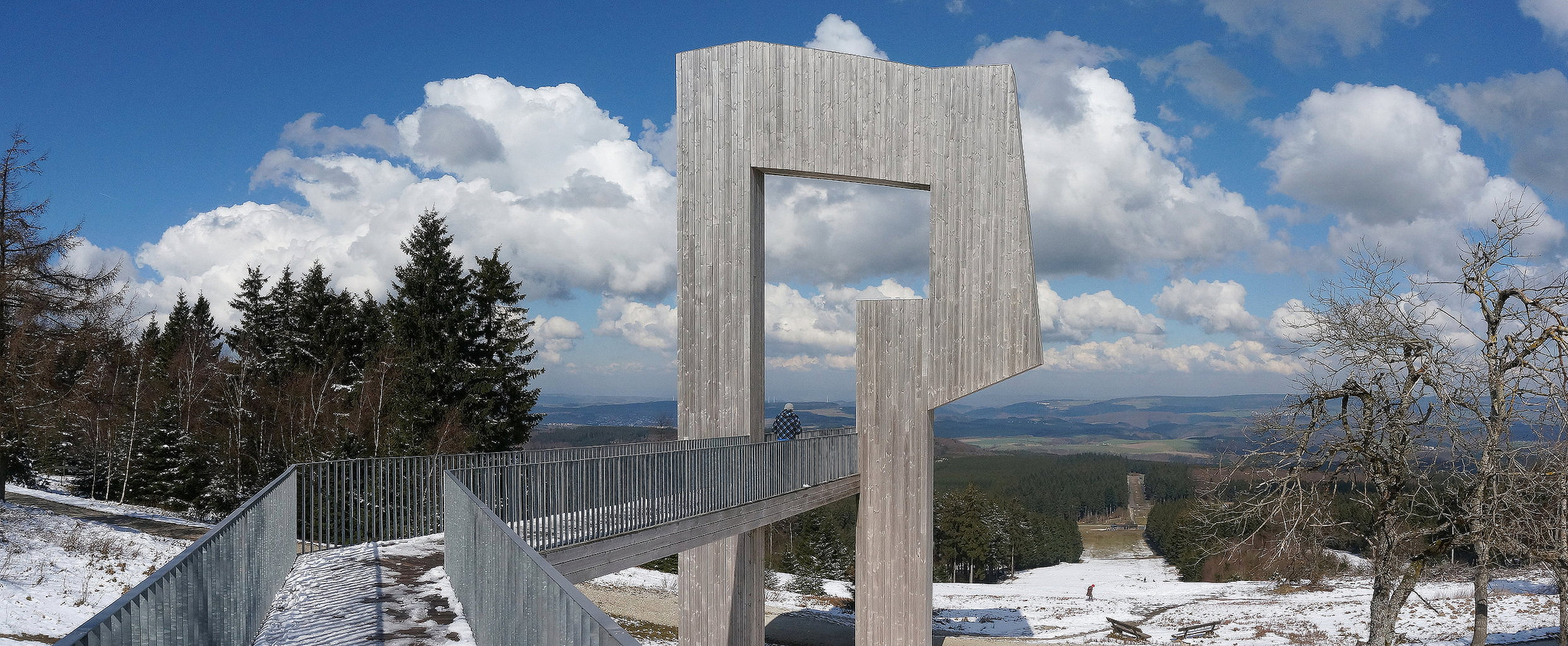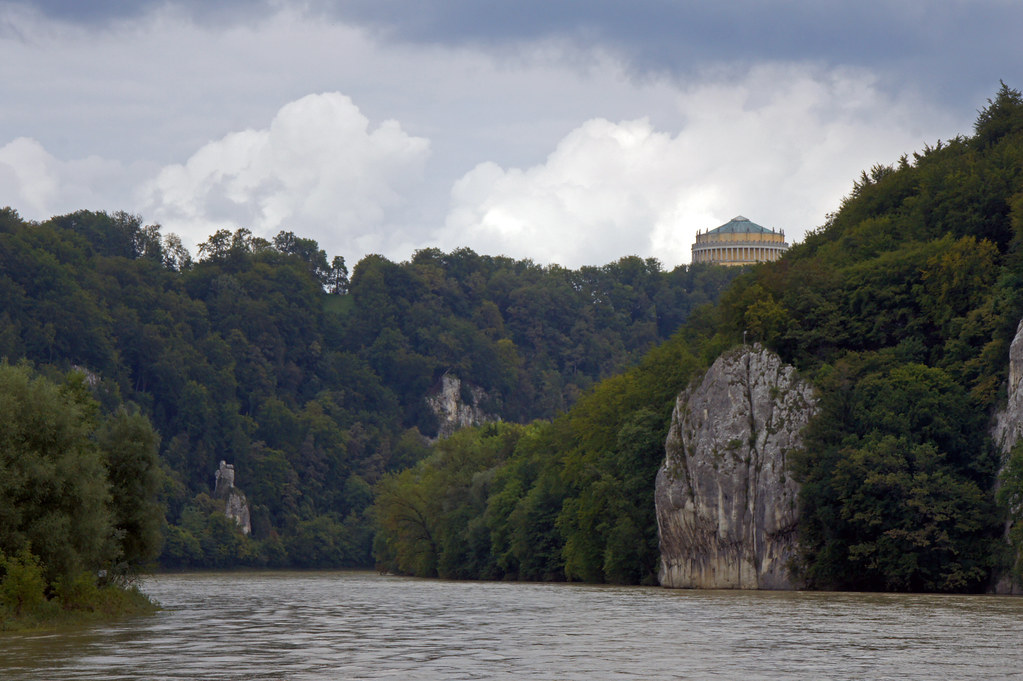German Nationalparks – Part 14: Hunsrück-Hochwald Posted by Sten on Sep 10, 2016 in Culture, Language
In previous months, we have already explored a large part of the geschützte Schönheit (protected beauty) of German nature. We went to the windige Küsten (windy shores) of the Wattenmeer, the eindrucksvolle Felsen (impressive rocks) of the Sächsische Schweiz, the Jahrhunderte alten Wälder (centuries old forests) of the Bayerischer Wald, the Erzminen (ore mines) in the Harz, the Tiger (tigers) roaming around in the Eifel, the Tausend Seen (thousand lakes) of Müritz, the hohe Gebirge (high mountain ranges) of Berchtesgaden, and the atemberaubende Natur (stunning nature) of the Schwarzwald. We discovered the bedrohten Kreidefelsen (threatened chalk cliffs) of Jasmund. We visited Hainich, and its Alte Buchen (old beeches). Then, we went to Hessen, to Kellerwald-Edersee with the Staudamm (dam) of the Edersee and its old forests. We then returned north to the beautiful lagoons of the Vorpommersche Boddenlandschaft. And last time, we visited the unique Polder-Landschaft (polder landscape) of the Unteres Odertal.
This is the last post of this series of German national parks. And today, we visit not only the last park in this series, but also the youngest Nationalpark of Germany! I hope that you liked the series and let me know if you would like to see more series like this and whether it helped you to learn about German culture and the German language!
Der Nationalpark Hunsrück-Hochwald
The youngest Nationalpark is really young: it was established only a year ago. The sixteenth park was officially opened during the Pfingstwochenende (Pentecost weekend) 2015. It is located in the west, with a small part of the park located in Bundesland (federal state) Saarland, below the Eifel. The rest of the 10.120 hectares (25.000 acres) is located in Bundesland Rheinland-Pfalz (Rhineland-Palatinate).
The park is located on the Hunsrück, a Mittelgebirge (low mountain range). The Erbeskopf is the highest mountain of the Gebirge (see below).
What is special about the Nationalpark Hunsrück-Hochwald?
Durchbruchstäler
Another feature of the region, but certainly also of the Nationalpark, are the Durchbruchstäler (breakthrough valleys). These are valleys created by rivers that run with a lot of force through their mountain range and erode the rock. The result: impressive Klippen (cliffs) and senkrechte Felswände (vertical rock faces). You can see the ones in the park in the first part of the video above. Pictured above is a Durchbruchstal in Franken in the Oberpfalz, in Bundesland Bayern (Bavaria).
Der Erbeskopf

The sculpture Windklang on the Erbeskopf. The snow tells you the height differences! (Image by Markus Ertl at Flickr.com under license CC BY SA 2.0)
The Erbeskopf is the tallest mountain in Hunsrück with 816 m (2680 ft). The wonderful views from up here also make it one of the highlights of the park. You can enjoy the view either from the Erbeskopfturm (Erbeskopf tower) or the sculpture Windklang (wind tone).
Interesting about the Erbeskopf is that it will permanently have about 1 m (3 ft) of Schnee (snow) in the winter. As you can see on the picture above, the Erbeskopf is still covered in a thin layer of snow, while lower parts of the area are free of the winter white already.
However, in the winter, the snow can be deep enough for Skifahren (skiing)! Even though the Pisten (slopes) are not very long or steep, they can still be fun. And if you don’t like skiing, the Rodelbahn (toboggan run) offers an alternative way to have fun.
Many unique animal species

A Haselhahn (hazel cock) (Image by Wilfried Berns at Commons.wikimedia.org under license CC BY SA 2.0 de).
Due to its special kind of ecology, the Nationalpark houses many unique animal species, some of which are vom Aussterben bedroht (threatened with extinction). One kind is the Haselhuhn (hazel grouse), a selten (rare) species nowadays in Mitteleuropa (Central Europe).
Would you like to visit the Nationalpark, and maybe go for a wonderful Wanderung (hike) and enjoy the wunderschöne Natur (stunning nature)? Let me know in the comments! And let me know what you thought about the series overall!!!

Build vocabulary, practice pronunciation, and more with Transparent Language Online. Available anytime, anywhere, on any device.
About the Author: Sten
Hi! I am Sten, both Dutch and German. For many years, I've written for the German and the Dutch blogs with a passion for everything related to language and culture. It's fascinating to reflect on my own culture, and in the process allow our readers to learn more about it! Besides blogging, I am a German-Dutch-English translator, animator and filmmaker.






Comments:
joyce constantine:
Loved this series on German national parks. Very humanizing! Germans love nature at least as much as Americans if not more so. Would like to see more what life is like in Germany, e.g. industry, farming, trades.